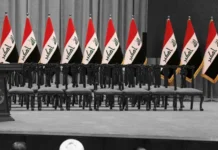Good Morning ,
UN Reimposes Sanctions on Iran Over Nuclear Program
The sanctions highlight not just nuclear concerns, but also the shifting power dynamics of global trade, finance, and monetary alignment.
Sanctions Return Under JCPOA Snapback
On September 28, 2025, the United Nations officially reimposed sanctions on Iran after France, Germany, and the UK (E3) triggered the snapback mechanism of the 2015 Joint Comprehensive Plan of Action (JCPOA).
The reinstated measures bring back six previous UN Security Council resolutions, including:
- Arms embargo banning weapons exports to Iran.
- Nuclear restrictions on enrichment and related activities.
- Missile technology ban on transfers linked to ballistic programs.
- Financial freezes on Iranian entities and officials.
- Cargo inspections for shipments to and from Iran.
The E3 argued Iran had engaged in “significant non-performance” by exceeding enrichment limits and restricting IAEA monitoring. A Russian-Chinese effort to delay the snapback failed in a UN Security Council vote on September 26.
Iran’s Response: Rejection and Retaliation
Iranian President Masoud Pezeshkian condemned the sanctions as “unjust and illegal”. Tehran retaliated diplomatically by recalling ambassadors from London, Paris, and Berlin.
The sanctions immediately worsened Iran’s fragile economy:
- The rial hit a record low, collapsing against the dollar.
- Inflation and shortages deepened, adding pressure to households already struggling with U.S. sanctions.
Geopolitical Divide Over Enforcement
The snapback has exposed sharp divisions inside the UN system:
- Russia and China declared the sanctions invalid and pledged to continue trade with Iran.
- The U.S. and E3 nations framed the move as necessary to restore accountability.
This divide shows that sanctions, once a tool of unified global governance, are now fragmented by multipolar competition. Enforcement will depend less on UN consensus and more on the parallel trade systems emerging outside Western frameworks.
Why This Matters
Iran’s snapback sanctions reflect more than nuclear noncompliance — they reveal the fault lines of global finance and trade realignment:
- The sanctions tighten Iran’s isolation from dollar-based systems, forcing it to lean harder on Russia, China, and potentially BRICS channels for survival.
- The split over enforcement demonstrates how Western financial dominance is being challenged by alternative blocs.
- The rial’s collapse underlines how currencies of sanctioned nations are increasingly tied to geopolitical alignment rather than market fundamentals.
This case reinforces the broader trend: sanctions are no longer just about diplomacy — they are about which monetary and trade system a country belongs to.
This is not just politics — it’s global finance restructuring before our eyes.
@ Newshounds News™ Exclusive
Sources: Reuters, U.S. State Department, New York Times, UK Government Statement, ABC News, Sky News, Al Jazeera
~~~~~~~~~
Global Debt Surge Puts Pressure on the Old System
Record debt levels globally are pushing nations toward financial fragility — accelerating a restructuring of monetary power and currency dependence.
A Record‐Setting Debt Landscape
- Global debt surged to $337.7 trillion by the end of Q2 2025, up by over $21 trillion in just six months, according to the Institute of International Finance (IIF).
- Emerging markets now face over $109 trillion in debt, and they are staring down more than $3.2 trillion in bond and loan redemptions before year‐end.
Major Economies Feel the Strain
- The U.S., China, France, Germany, Britain, Japan all showed large increases in dollar‐denominated debt—partly due to exchange rate effects as the U.S. dollar weakened.
- The debt‐to‐GDP ratio for emerging markets hit a record 242.4%, with global ratio just above 324%.
- Short‐term U.S. government debt now makes up about 20% of total federal debt, raising risks for interest sensitivity and central bank policy autonomy.
Why This Matters
This is more than just large numbers:
- Heavily indebted countries may lose financial policy flexibility. When debt servicing consumes budget, countries must choose between cutting public spending, raising taxes, or seeking new financial arrangements.
- Rising debt pressures create incentives for nations to seek alternative financing sources — including those outside the U.S. dollar system, or from regional blocs.
- Weaker U.S. dollar increases global debt burdens (when debt is dollar‐denominated), making dollar dominance less comfortable for many nations.
Geopolitical Implications
- Bond markets and global investors may begin to apply more pressure (“bond vigilantes”) to those perceived as fiscally irresponsible, which could destabilize traditional reserve currency‐led finance.
- Countries could shift toward alternative reserve currencies, gold, or non‐USD denominated debt markets if risks in holding and servicing USD debts grow.
Why This Matters
The global debt surge is not just an accounting concern—it is a pivotal stress test of the existing financial order. As governments buckle under debt, the logic of holding dollar‐centric assets, borrowing in dollars, or relying on U.S. financial markets becomes riskier. In this environment, new systems, currencies, or trade/payment networks can gain traction.
This is not just politics — it’s global finance restructuring before our eyes.
@ Newshounds News™ Exclusive
Source: Reuters
~~~~~~~~~
Seeds of Wisdom Team RV Currency Facts Youtube and Rumble
Newshound’s News Telegram Room Link
Follow the Gold/Silver Rate COMEX
Follow Fast Facts
Seeds of Wisdom Team™ Website





